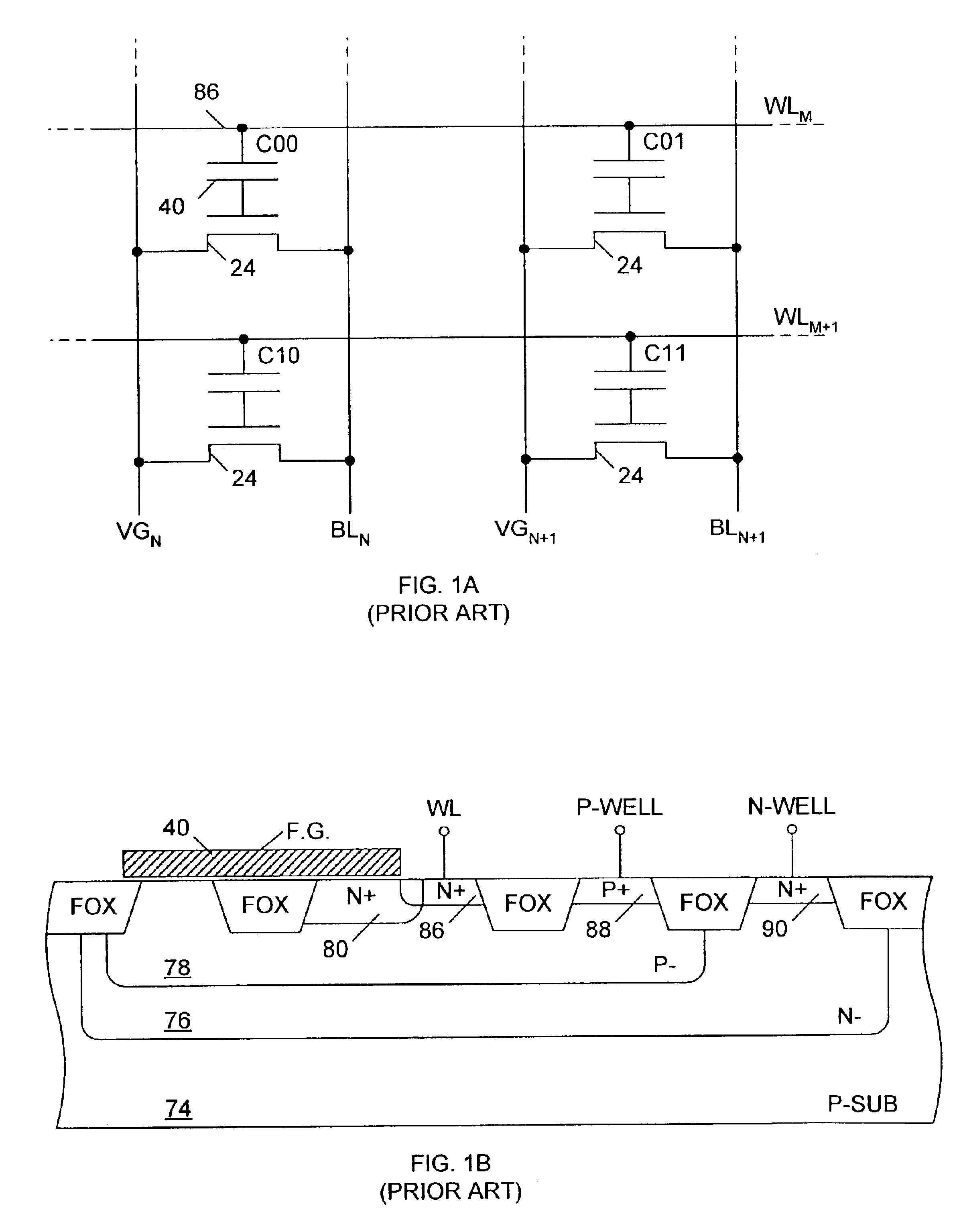Non-volatile memory cell fabricated with slight modification to a conventional logic process and methods of operating same
a non-volatile memory and logic process technology, applied in the field of non-volatile memory, can solve the problems of complex process, incompatibility with conventional logic process, and high cost, and achieve the effect of improving operating margin, suppressing leakage current, and improving electron removal operation and normal read operation
- Summary
- Abstract
- Description
- Claims
- Application Information
AI Technical Summary
Benefits of technology
Problems solved by technology
Method used
Image
Examples
Embodiment Construction
FIG. 2 is a top layout view of a non-volatile memory cell 200 in accordance with one embodiment of the present invention. FIG. 3A is a cross sectional view of the non-volatile memory cell of FIG. 2 along section line A—A. FIG. 3B is a cross sectional view of the non-volatile memory cell of FIG. 2 along section line B—B. In the described example, non-volatile memory cell 200 is fabricated using a 0.25 micron conventional logic process having a typical gate oxide thickness of about 5 nm. Non-volatile memory cell 200 is operated in response to a positive Vdd supply voltage that has a nominal voltage of 2.5 Volts during normal operations, and a Vss supply voltage of 0 Volts.
Non-volatile memory cell 200 is fabricated in a p-type monocrystalline semiconductor substrate 201 (see FIGS. 3A and 3B). In the described embodiment, substrate 201 is silicon. Non-volatile memory cell 200 includes a PMOS access transistor 210. Access transistor 210 includes p-type source region 211 and p-type drain ...
PUM
 Login to View More
Login to View More Abstract
Description
Claims
Application Information
 Login to View More
Login to View More - R&D
- Intellectual Property
- Life Sciences
- Materials
- Tech Scout
- Unparalleled Data Quality
- Higher Quality Content
- 60% Fewer Hallucinations
Browse by: Latest US Patents, China's latest patents, Technical Efficacy Thesaurus, Application Domain, Technology Topic, Popular Technical Reports.
© 2025 PatSnap. All rights reserved.Legal|Privacy policy|Modern Slavery Act Transparency Statement|Sitemap|About US| Contact US: help@patsnap.com



